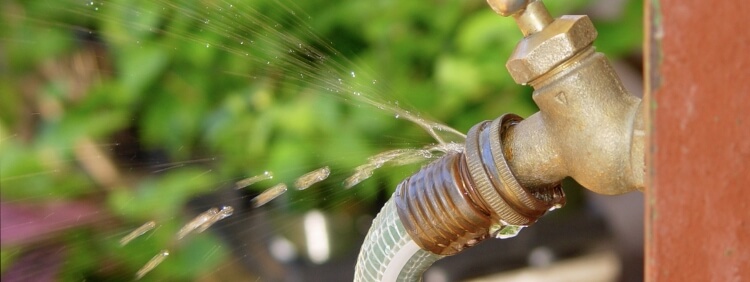 Carpenter ants are a common pest found during the spring season. These ants are known for their destructive tendencies and can cause significant damage to wooden structures. Understanding the life cycle of carpenter ants and their activity patterns is crucial in preventing infestations and keeping your home safe.
This blog article will provide you with an in-depth understanding of carpenter ants and their behaviour during the spring season. Our experts at Truly Nolen will cover topics such as identifying signs of carpenter ants in your house, the life cycle of these pests, and effective carpenter ant removal methods. By the end of this article, you will have a comprehensive understanding of carpenter ants and how to protect your home from infestations.
Carpenter ants are a common pest found during the spring season. These ants are known for their destructive tendencies and can cause significant damage to wooden structures. Understanding the life cycle of carpenter ants and their activity patterns is crucial in preventing infestations and keeping your home safe.
This blog article will provide you with an in-depth understanding of carpenter ants and their behaviour during the spring season. Our experts at Truly Nolen will cover topics such as identifying signs of carpenter ants in your house, the life cycle of these pests, and effective carpenter ant removal methods. By the end of this article, you will have a comprehensive understanding of carpenter ants and how to protect your home from infestations.
Natural Calendar: Seasonal Behaviour of Carpenter Ants
As spring approaches, warming temperatures and melting snow provide perfect conditions for the carpenter ants to begin their mating season. The males, or "swarmers", are winged and will typically be the first ones to become active, searching for mates and suitable nesting sites. The queen, larger than the worker ants, begins laying her eggs early in the spring. Once hatched, the larvae are nurtured and fed by worker ants. As the season progresses, the larvae transform into pupae, and soon after, they metamorphose into adult ants ready to embark on their life's journey.Carpenter Ant's Activities During Spring
Most owners first become aware of the carpenter ants' presence in their homes during spring when the pest's activity level skyrockets. But what are these tiny architects up to?- Excavating: Primarily, the carpenter ants carve out galleries and tunnels in wood structures for nesting. Contrary to popular belief, they don't eat the wood. Instead, they hollow it out, which can gradually compromise the integrity of the structure if left unaddressed.
- Finding food: As the weather warms, the workers venture outside the nest to forage. You may spot them around sugary foods, protein sources, and dead insects.
- Reproduction: Spring is the primary reproductive period for the carpenter ants, making it a crucial time to prevent any further infestation.
Early Detection: Signs of a Carpenter Ant Infestation
Identifying an infestation in the early stages can prove instrumental in minimizing potential damage. Here are some signs to look out for:- Evidence of excavation: Small piles of wood shavings, similar to sawdust, near wood sources or at the entry points of their nests suggest the pests are around.
- Noises within your walls: When a colony is large, you may be able to hear them as they carve out their galleries, especially in the quiet of the night.
- Sightings: The presence of large, winged ants in or around your home is a definite sign of a nearby colony. It's important to remember that these creatures are most active at night.
- Foraging Tracks: Another significant sign of a carpenter ant infestation is the sight of foraging pathways. These are typically located in secluded areas such as between the carpet and skirting boards, behind furniture, or in the damp areas of your property. Our little intruders generally follow a scent trail, leading to a definitive food source or the parent colony.
- Structural Damage: Prolonged infestations can lead to visible damage. The exit holes they make as escape routes and the hollowed-out wood resulting from their nesting habits can compromise the structural integrity of your property. You'll typically find this deformation in areas where the timber is moist, such as those affected by leaks, condensation, or flooding.
- Damage to Insulation: Carpenter ants are known to remove insulation materials when establishing their colonies. While this doesn't necessarily cause direct damage, it can affect your home's energy efficiency and lead to unnecessary costs over time.
Breaking the Life Cycle: Effective Control Strategies
 Armed with knowledge on the life cycle and habits of carpenter ants, you can now strategize on breaking it. Here are some of the best practices to adopt for effective control:
Armed with knowledge on the life cycle and habits of carpenter ants, you can now strategize on breaking it. Here are some of the best practices to adopt for effective control:
- Eliminate Food Sources: Regularly clean up crumbs and spills, especially from sugary foods. A spotless kitchen and dining area can prove unattractive to these pests.
- Remove Potential Nesting Sites: Trimming tree branches that touch your home or disposing of rotting wood can minimize their chances of nesting.
- Seal Entry Points: Tiny cracks, crevices, and other openings should be promptly sealed. Doing so helps to eliminate potential entryways into your home.
- Moisture Control: Ensure to fix leaking taps, damaged gutters, or other areas that cause water build-up. These pests prefer damp environments.
- Proper Food Storage: Keep food items properly sealed and disposed of garbage regularly to avoid attracting these insects.
- Regular Property Checks: Regularly inspect your property for signs of damage, especially in wooden structures, which may indicate the presence of a nest.
- Professional Pest Control: If an infestation is large or in areas difficult to reach, professional assistance from Truly Nolen is recommended.
Carpenter Ant Removal with Truly Nolen
At Truly Nolen Canada, we promise to help you reclaim your home from carpenter ant infestations using time-tested techniques and innovative solutions. Our team of well-trained professionals is equipped with state-of-the-art methods to effectively tackle these persistent pests. We provide efficient and prompt service, ensuring you and your home are safe from carpenter ant related damages. Our process is simple yet effective. Firstly, we inspect your property thoroughly to gauge the extent of the infestation. We look for signs like sawdust piles, foraging tracks, structural damages and more to accurately locate the ants' nests. Once we have identified the extent and locations of the infestation, our team devises a custom removal strategy suited to your specific scenario. This could range from pesticide applications to baiting systems, always selecting the least impactful methods for your home environment.Long-Term Prevention: Keeping Your Home Carpenter Ant-Free
Eliminating an existing carpenter ant colony is only half the battle. The true victory lies in preventing future infestations. At Truly Nolen, we don't just help you eradicate the pests; we also provide you with long-term solutions to keep your home carpenter ant-free.- Regular Inspections: Once the existing carpenter ants are controlled, we recommend regular inspections of your property. This preventative measure helps to quickly spot and address any new infestations.
- Actionable Advice: Our team offers practical tips on how you can make your property less appealing to carpenter ants. This may include suggestions to improve home maintenance, eliminate moisture problems, and manage potential food sources.
- Post-Treatment Monitoring: After treatment, we continue monitoring your property for any signs of re-infestation. Support and additional treatments are available if needed.

